Dragon Age: Inquisition is a multiplatform Role-Playing Game (RPG) released in November 2014. It is the third installment in BioWare’s Dragon Age franchise. Like the other installments, Inquisition is a character-driven dark fantasy game. The first game in the franchise, Dragon Age: Origins, was released in 2009. It was generally liked but had its fair share of bugs (which modders have addressed) and was noticeably dumbed down and heavily regressed compared to Neverwinter Nights, a sign of what was to come for the RPG genre.
Along came Dragon Age II in 2011, only one year after the release of Dragon Age: Origins – Awakening. Dragon Age II was remarkable! It’s a 50 hour RPG set almost exclusively within the walls of a city, just a few maps for you to spend your 50 hours in. It does an excellent job making you feel like a prisoner, especially with its incredibly tedious yet mindless combat that looks like it came straight out of an anime, which includes 45 minute boss fights! You are almost guaranteed to fall asleep playing that game and it accomplishes literally nothing.
BioWare did acknowledge everything that went wrong with Dragon Age 2, even making fun of it numerous times during Dragon Age: Inquisition (this can usually be found in dialogue with Varric, one of Inquisition’s companion characters). As marketing material released, Inquisition began to look rather ambitious, not unlike Origins. Let’s see what it accomplishes.
Closer Look
Like every other recent EA game, Dragon Age: Inquisition requires an Origin account, regardless of where you bought the game from. The game is built on Frostbite 3 engine, and is roughly 26GB in size (smaller than Battlefield 4). Loading times may be longer than what you’re used to, but installing the game on an SSD helps.
BioWare claims to have wanted to focus strongly on the PC version, since after all they used to be a PC exclusive developer. Inquisition does have nice PC exclusive features, but not quite as much as Origins which has a friendlier UI, mod support, a walk feature, and other things which we’ll mention later in this review.
When first launching Inquisition, it is immediately apparent that both BioWare and EA are trying to deliver a message. In nearly every other mainstream game, the first start-up splash screen you see is for the publisher (in this case EA) and then the developer (in this case BioWare). The publisher’s splash screen usually lasts for an eternity as well. When launching Dragon Age: Inquisition, both the EA and Bioware logo share the same screen which is very surprising. Perhaps EA is trying to suggest that they aren’t as bad as their reputation suggests, and they aren’t about total control and domination over their products. The splash screens are really brief as well.
What is even more important is that Inquisition has an abundance of PC exclusive graphics options, UI options, control/key binding options, and a specially designed HUD for mouse and keyboard. Plugging in a controller will give you the console HUD.

We were so pleased to see race choices come back in Dragon Age: Inquisition. In Origins, you could choose either Human, Elf, or Dwarf races. Dragon Age 2 had no race choices so you were always Human. Inquisition has Human, Elf, Dwarf, and Qunari. The addition of Qunari was very surprising and this only leads to more diversity. Your race choice has some impact on the game: while you don’t get a different playable prologue like in Dragon Age: Origins, your biography changes and dialogue throughout the game changes. It also affects one of the main quests later in the game. As expected you can also choose between male and female genders for each race. Unlike Origins, the protagonist’s dialogue in Inquisition is fully voiced, which is very surprising given how much dialogue the game actually offers.
However, Inquisition has only a small amount of unique dialogue choices. Even Origins had a small amount compared to other RPGs like Neverwinter Nights. This is because Inquisition has no persuasion or intimidation skills like Origins had. It still offers many dialogue choices, but most aren’t unique to your character build, they’re always there. The only unique ones are race or class related. This means Inquisition is a weak RPG from the get go.
The character creation is nice and detailed graphically, but too bad it is lacking in depth compared to any real RPG. But we’ll get to this more later.
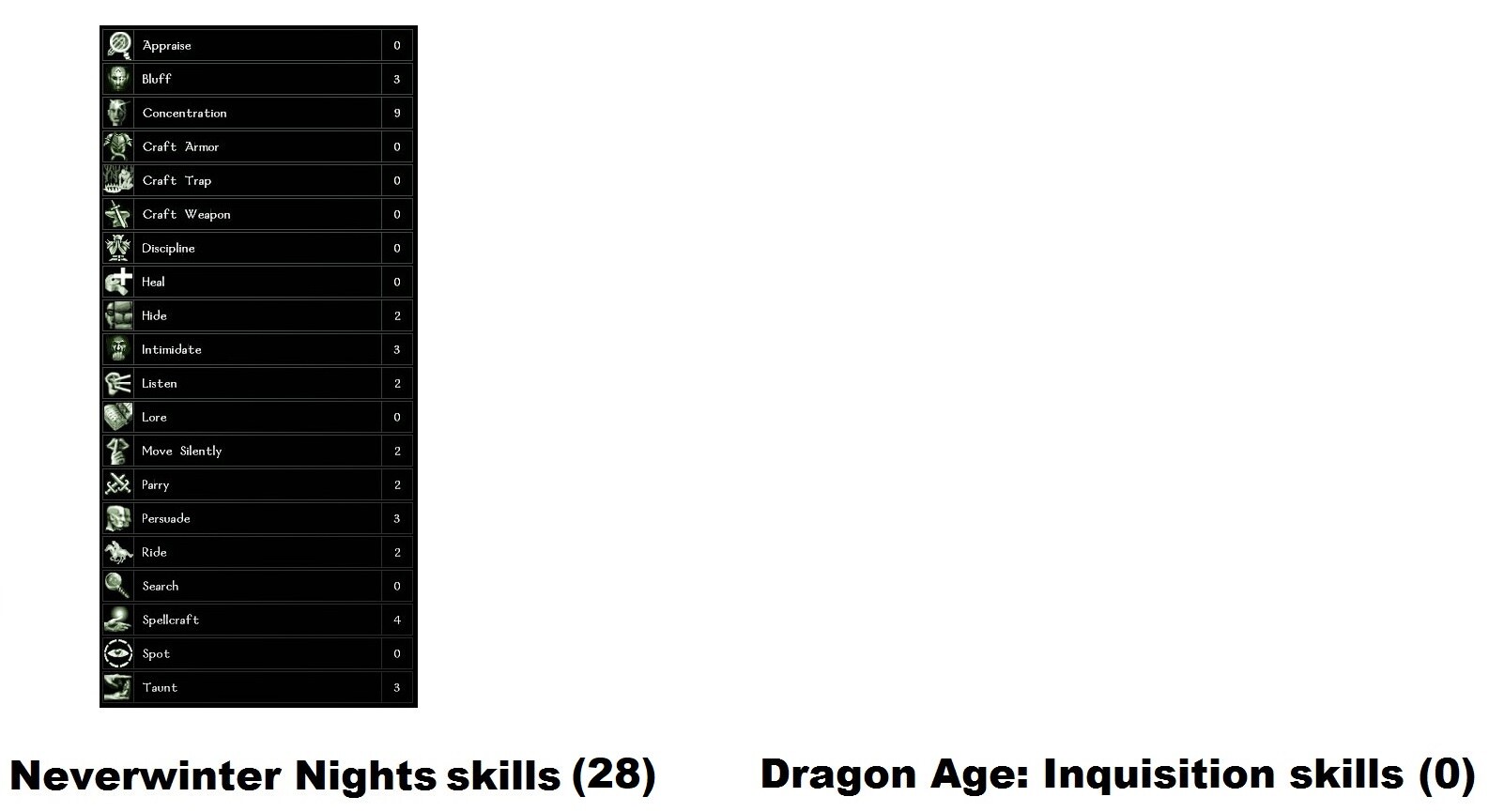
Dragon Age: Inquisition takes place around one year after Dragon Age 2. During the prologue, many of the most important political figures are having a meeting in Haven, discussing the ongoing Mage-Templar war and trying to come to some sort of agreement. So technically it is important to the story to have played Dragon Age 2, but we cannot recommend Dragon Age 2 to anyone.
But something horrible happens, some kind of explosion, and the only survivor of it is the protagonist, who was seen being led out of the Fade (spirit world) by a womanly figure. This explosion creates what becomes known as “The Breach”, a massive tear in the veil (which is what separates our world from the spirit world) causing demons to flow through and chaos to consume the land.
Since the protagonist was the only survivor, he/she is considered to be a suspect and is therefore being held responsible for the explosion by some. The explosion also left the protagonist with a unique ability; the ability to close “Rifts”, or tears in the veil that ensued after the explosion. During the prologue, you will be battling demons around Haven alongside Cassandra, the first companion of the game (and an NPC from Dragon Age 2), and you will be closing some of these rifts. The prologue ends with you attempting to seal the Breach.
After the prologue, the protagonist becomes known as the Herald of Andraste, and most NPCs will be referring to you by this title so you had better get used to it. In Dragon Age lore, Andraste was a prophet and the mortal bride of the Maker (God), and throughout the game many people believe the protagonist to be chosen by them, and that womanly figure who rescued the protagonist after the explosion is believed to have been Andraste herself.
The events during the prologue escalated the Mage-Templar war, causing it to be worse than ever, and combined with demons threatening the land, Thedas is in a true state of emergency. This is why early in the plot the Inquisition is reformed; an ancient order that rises up when necessary, and relinquishes their power once the threat has been neutralized. In Dragon Age: Inquisition you play not only has the supposed Herald of Andraste, but also the Inquisitor.

It might come as a surprise that Dragon Age: Inquisition has no save-game importing. This is to avoid bugs, since it’s built on an entirely different engine and even a different platform for consoles. Instead, BioWare and EA created Dragon Age Keep. This allows you to recreate your characters from every Dragon Age game, as well as the vast majority of their decisions, so that you can effectively port your previous games to Dragon Age: Inquisition. Essentially you can add your Dragon Age: Origins and Dragon Age 2 characters here along with all of their choices, which then creates a new “World State” for Inquisition. This “World State” is what’s ported to Inquisition. Some might not like Dragon Age Keep, but it was necessary. Direct save-game importing is nice but will lead to bugs especially when porting to a different engine, as seen in Dragon Age 2.
The concern here is, will Dragon Age: Keep still be around in 10 years? How about 20 years? People still play 20 year old games today, such as the first two DOOM games, System Shock, and others. I have a feeling EA/BioWare didn’t consider this, and while EA can easily keep Dragon Age: Keep online for as long as they want, they could’ve done the same for online servers for games like Battlefield 2142 but they didn’t.
Like other BioWare games, Dragon Age: Inquisition’s story is “Unite the people, save the world.” Very simple, very cliche, very childish. The focus is instead on melodrama and romance with the characters, since that’s what BioWare fans want. Well, Inquisition has plenty of it. You can talk to Dorian about his daddy issues, you can experience the cringey quirkiness of Sera, you can bother Cassandra as often as you like and you can very easy predict every single possible outcome from it. There is character development here; it’s cliche, unoriginal, and unfulfilling, but BioWare tried as they always do. But you’re never going to develop relationships as memorable as the one or two that are memorable from the Mass Effect trilogy.
The dialogue choices in Inquisition are a bit different than every other Dragon Age game; there is a wider variety of responses which the player can choose from. The basic dialogue wheel has three responses: noble, clever, and direct, very dumbed down just like Dragon Age 2. Then there is the emotional dialogue wheel, which has responses demonstrating sadness, happiness, confusion, or a less emotional response. You can also ask questions which don’t advance dialogue, and there are more “special” dialogue options, like asking a companion for an opinion, or dialogue choices based on your race or class.
Obviously this is a huge step down from the likes of the Neverwinter Nights series, but it isn’t as bad as it initially looks and not as bad as Dragon Age 2. Either way, I want games to advance, not regress, and this is pure regression compared to any great classic RPG.
Unfortunately, Inquisition is a whopping 70-150 hour game. In fact, a completionist playthrough will take closer to 250 hours. Why is that unfortunate? Because there’s tons of wasted space, unremarkable side quests, a plot that just gets more silly as it goes on, overly cliche character development with entirely predictable outcomes, and horrendous combat. Not a good selection of things to experience in a game, let alone for 80 hours, let alone for 150 hours, let alone for 250.
To get an idea of how much slower the story progression is, depending on your time spent in the Hinterlands (the first “open world” region of the game), you might spend the first 30 hours of the game or so with the first 3 companions and no new ones. Compared to Dragon Age: Origins, a 50-60 hour game, in which you unlock the majority of the companions at the 30 hour mark. But this is largely dependent on the player.
However, if you rush through Inquisition and do only main quests, then you will have more companions unlocked by the 30 hour mark, and you may finish the game in 50-60 hours. The difference is, a 50-60 hour playthrough of Origins is thorough, while a 50-60 hour playthrough will feel rushed but perhaps it’s for the best.
One of the worst things about the writing of Inquisition is its main antagonist, Corypheus. He is the most stereotypical, generic, shallow, bad comic movie antagonist you can imagine. He is just one of the ancient Magisters who tried to invade heaven and become a God. He failed and is very angry now and would like to try again. He ends up raising an army of sorts and corrupting people with the Darkspawn taint. The plot of Inquisition gets forcibly more “epic” after every main quest, the battles get bigger, it gets more and more like a Marvel movie. It’s big, flashy, and silly, but obviously not thematically interesting in the slightest.
Because there’s minimal role-playing and extremely generic, uninteresting writing, its only hope is combat. Continue reading to see how it fares there.
Gameplay
Like its predecessors, Inquisition is a real-time with pause RPG, but it still carries some of that anime influence from Dragon Age 2. Not nearly as much, but all the animations still appear sped up and over the top so yeah… it might as well be Dragon Ball Z.
You will be controlling a party of 4 characters, controlling their actions in combat, and on harder difficulties you will have to plan some battles beforehand which makes it unlike the utterly mindless hack and slash Dragon Age 2. You are given the same amount of control over your party companions and your own character. The party leader is simply whoever you are currently playing as, and you can also issue basic commands to your other party members such as hold position, disengage, attack my target, protect one of the party leader, and there is a function to clear all commands. Inquisition’s gameplay does some things right but a LOT more things wrong.

Like other games, the player (and therefore all party members) has a health bar which increases as you level up (affected by the Constitution attribute). Warriors and rogues have a stamina bar, and using abilities in combat uses stamina. Mages instead have a mana bar and of course spells drain it. Mana and stamina actually don’t increase when leveling up. Inquisition’s gameplay focuses a lot on cooldown rates for spells and warrior/rogue abilities, which can be lowered by selecting certain passive abilities when leveling up.
So Inquisition deviates a bit from traditional RPG gameplay. Another difference, a bigger one, is that the vast majority of enemies you encounter have more health than the player’s party characters. Battles are a lot less fair on paper since there’s no healing magic; if you’re fighting an enemy of the same level, they will have much more health, though less armor usually, and they generally don’t cast deadly area of effect (AoE) spells.
This is much different than Dragon Age: Origins and D&D which put the player characters and the enemy on a more even playing field, not restricting the enemies abilities and having more equal health and armor values (excluding bosses). Bosses in Dragon Age: Inquisition have a massive amount of health, and you can attack different body parts for different effect.
Ultimately, Origins and especially the Neverwinter Nights games have the better approach here. Better balance, less restricted enemy AI.

Before you ask, companion armor customization has indeed returned. It’s different in Inquisition though: first of all, gloves/gauntlets and boots are considered “upgrades” now. In the inventory there is only one armor slot and a headgear slot. Boots and gloves/gauntlets are attached to armors at armor upgrade tables, which are located next to other crafting tables in safe hubs. Armors are usually limited to specific classes which is normal and very fitting for an RPG, and some armors thankfully have race restrictions. Most of the time however, armors will look different on every companion which adds a new dimension of variety, although this doesn’t apply to certain armors. Lastly, certain armor sets have the same look and a similar name to others, acting as “better versions” which is a feature found in many RPGs.
The leveling system, in which you level up by gaining XP from completing quests or killing enemies, is noticeably slower in Inquisition. In fact, the overall pacing of the plot and character development is also slower since the game is longer. It’s not open world, it is hub based like Origins but amplified. Its main maps are nearly as big as the open world in some open world games.
A new mechanic that Inquisition has is a “search” feature. Like in Dragon Age: Origins, Inquisition has many hidden things around the world, but now there is a way to easily find them. When in the vicinity of such things, your HUD’s minimap will begin to glow and you’ll hear a “shimmering” sound, which grows louder as you approach the hidden object. Pressing “V” by default scans the area and will point you in the direction of the hidden object.
One of the activities you’ll be encouraged to do when exploring its giant maps is collect materials for crafting, because this is now a boring trend in gaming. It’s not necessary to balance the game, it’s not even very rewarding. Probably the only high fantasy RPGs to implement crafting well are the Neverwinter Nights series campaigns that bother to include it (Neverwinter Nights 2: Storm of Zehir perhaps most of all), and Arcanum: Steamworks of Magick Obscura
Inquisition also has very busy hubs, full of NPCs who wander around and have conversations with one another. These hubs are where most of the companion dialogue takes place, and it’s also where weapon/armor upgrading and crafting is done, as well as potion upgrading and trading. Companions are also highly talkative outside of hubs, through randomized banter (which may involve the protagonist as well), and they occasionally add to dialogue scenarios. As mentioned earlier, the player can sometimes ask for a companion’s opinion during dialogue scenes, and the companion may even handle the situation on their own. We advise returning to your hub often, to complete operations on the War Table and to talk to characters, moving the character development forward.
Skyhold, a hub unlocked later in the game, is a big hub which you can eventually upgrade and customize. Another RPG with inspiration taken from The Sims.

Worth mentioning is the inclusion of mounts, or horses which you can ride. Mounts have the same movement controls as the player, except with the ability to sprint by pressing Left Shift. Getting on a mount makes your companions disappear, and getting off of it makes your companions reappear next to you. After dismounting, your mount will disappear momentarily but it can be called back by pressing the equal sign key by default.
Inquisition has the same attributes as the previous Dragon Age games (Strength, Dexterity, Constitution, Willpower, Magic, Cunning), but for some reason they are raised automatically when leveling up. You have no control over your attributes when leveling up. This is where Inquisition’s strong lack of gameplay diversity (which we’ll go over in a bit) works in its favor: no matter what type of character you made, only two attributes will be very important for you, and these are the ones that will be incremented when leveling up. Also, Inquisition has more focus on upgrading/enchanting items to affect your attributes. So while the forced attribute system is a problem, it’s not a huge problem in Inquisition compared to the huge problems this would cause in a D&D game or Fallout game.
The overall UI layout and inventory system is fairly typical for a wRPG. In the pause menu, there is a section called “Character Record” which lists a character’s Abilities, Tactics, Attributes, and Behaviors. We went over attributes in the paragraph above, abilities include spells or other talents depending on your character (you get to choose one when leveling up), tactics only allow you to enable or disable the automatic usage of each ability, and behaviors are shown in the picture below.

These fundamental behavior rules are so much more dumbed down compared to Neverwinter Nights 2. And the magnificent tactics system (in-game AI programming/customization) from Dragon Age: Origins? Gone entirely of course!
Another thing that was removed was the skill system from Dragon Age: Origins. Each skill had 4 levels. Skills weren’t in Dragon Age 2 either. The skills in Origins are:
- Coercion – Which refers to persuasion and intimidation
- Stealing – Pickpocketing
- Trap-Making – Self-explanatory
- Survival – Tracking enemies on the minimap, which is automatic now
- Herbalism – Making potions
- Poison-Making – Making poisons
- Combat Training – This was just a prerequisite for talents/abilities
- Combat Tactics – Unlocked tactics slots, but the tactics system of Origins is not included with Inquisition anyway
- Runecrafting – Crafting runes for enchanting, added by Awakening
- Vitality – Simple passive health buffs, added by Awakening
- Clarity – Simple passive mana/stamina buffs, added by Awakening
To be honest, most of those skills are useless. It’s not like D&D or S.P.E.C.I.A.L. which are full of very useful skills. Coercion is the biggest loss, since every story-driven RPG I’ve played has it. While the skills system is gone, some of their abilities are still part of Dragon Age: Inquisition. Herbalism is more strongly focused on in Inquisition, but it’s not a skill so it’s not affected by leveling, and it can only be done at potion tables. You can also make poisons at potion tables.
The inventory is like almost every other wRPG inventory so there’s not much to say about it. It’s straightforward and easy to use. Like the previous games, the party’s items are all stored in one inventory, so all 4 characters have a shared inventory. Inventory capacity is determined by item count: at the start of the game it’s 60. Like the previous Dragon Age games you can’t drop items, you can only destroy them.
Like most other BioWare games, there is a Codex. It will store texts which can be found throughout the game (there are easily hundreds), most of which revolve around Thedas lore. If you walk into a tavern and a bard is playing a song, that song’s lyrics will appear in your Codex. Whenever you find a new enemy, the details and known information about that enemy will appear in a new Codex entry. Whenever you meet a new important character, that character’s biography appears in your Codex (and these may be updated over time). Inquisition has an abundance of reading material, such as short stories and these other Codex entries, but of course the quality isn’t great since it’s just Dragon Age.

One aspect which we were really concerned about was combat. Origins had the AI tactics system and spell combos, but was noticeably dumbed down everywhere else compared to any D&D game. Well, it comes as no surprise after reading the above that Inquisition represents pure decline in this area too.
Dragon Age: Inquisition essentially has two gameplay “modes” which is unlike its predecessors. In the default mode, the camera is in third person and you move around with “WASD” keys by default, like the previous Dragon Age games except point-and-click movement doesn’t work at all. Inquisition has some of the smoothest, most refined movement of any game, and you can even slip and fall down hills sort of like in Miasmata. There’s even a jump function, which to our knowledge is a first in a real time with pause wRPG.
The combat controls in this mode are quite different than the other Dragon Age games. From now on we will call this mode “Action Mode” for clarification. In this mode, there is no more auto-attack; to attack enemies you have to hold Left Mouse Button (LMB) almost like a hack and slash game. This is how Dragon Age 2 is on consoles, but Inquisition is like this on all platforms when playing on “Action Mode.” You can still pause in this mode however, but it is more action oriented. As an action game, combat in “Action Mode” is really basic, clunky, and it’s not intuitive at all. This combat style addition adds nothing to the game.
The other mode is “Tactical Mode” which has a totally different camera. Thankfully this uses separate key bindings, which shows that BioWare was paying attention to the PC version when designing Inquisition’s controls. By default, “Tactical Mode” is activated and deactivated by pressing T. Once activated, the camera immediately switches to an isometric view point, and circles appear underneath every party member’s feet. Despite being isometric, the zoom is limited and you can’t zoom out enough, which can be problematic in certain scenarios.
Inquisition’s tactical camera doesn’t follow a single character, you move it around the battlefield freely like a strategy game. We love this feature. It’s also not limited to isometric viewpoint; you can move the camera around freely, and view battles in more cinematic fashion. This makes combat much more fun than it would have been otherwise. Auto-attack is enabled in tactical mode, which means you only need to order a party member to attack a target once, and they will continue to do it until you give them a new command or until the threat is neutralized (this of course applies to the player character too). Tactical mode is not focused on the player, but the entire party.

The tactical camera has plenty of flaws. As mentioned it moves around freely using the WASD keys (as well as Q and E), or by holding SHIFT and moving the mouse. Holding RMB and moving the mouse changes its angle, and the scroll wheel controls zoom. This is all ideal.
But you can’t zoom out enough which is really limiting. A bigger problem comes when moving the camera around the battlefield: for some reason the camera can “bump” into obstacles, so it can be harder to position the camera at an ideal location because of this. This problem isn’t present in other RPGs like the Neverwinter Nights games, so it’s strange that it’s here, and it’s very annoying. It’s almost like the tactical camera is an entity with collision physics.
No matter which mode you’re in, the game still uses point-and-click interaction, using the right mouse button like in Dragon Age: Origins. However, you can no longer right click something from a distance and have your character automatically run up to it and interact with it. You have to be in the immediate vicinity to interact with something, like an action game, and this is a minor inconvenience.
The combat pace itself is in between that of Dragon Age: Origins and Dragon Age 2. Those two games are total opposites of the spectrum; Origins is slow-motion, Dragon Age 2 is anime. Inquisition is closer to Dragon Age 2 but not nearly as bad.
Enemies generally don’t scale down to your level, so you can “overlevel” or spend too much time fighting easier fights and leveling up, resulting in you becoming insanely overpowered. This takes advantage of Inquisition’s open design; you can stay in the Hinterlands (the first open world region) for essentially as long as you want, growing overpowered in the process and making the rest of the game easier. The varied terrain of Inquisition does make terrain advantages a thing, especially with the idiotic AI which doesn’t use this terrain well at all.
We strongly advise paying attention to the level recommendations. Main quests and other significant quests have them: for example, when initiating a quest at the war table, it may say something like “Recommended Levels: 12 to 15” and this means several things: this means enemies will scale between those levels, to match the player character. But they won’t scale outside of levels 12-15, therefore the quest would be too easy for seasoned RPG players if you’re leveled up past 15. We highly recommend abiding to those level recommendations, sticking to the lower end (in this case, level 12).

Inquisition fails at character build diversity. Dragon Age: Origins has a Healer spell tree (called the Creation school of magic) and an Entropy spell tree, unlike Inquisition. This means The Four Schools of Magic are no longer valid, and it’s really only two schools of magic in Inquisition (Primal and Spirit). Some spells that resemble entropy spells have been moved to other spell trees though, such as the “Necromancer” specialization. Spells similar to the Creation school of Origins can be found in Inquisition’s “Rift Mage” specialization, which also includes spells that resemble the force spells of Dragon Age 2. We will discuss class specializations later.
The only ways to heal in Inquisition are with potions, by resting in safe zones, and specific passive abilities which may heal you slightly in combat. Healing potions can be restocked an unlimited amount of times in safe zones, and they are shared with the group (and have a set limitation). There are other potion slots which are individual and therefore not shared with the party. These potions are not unlimited and require herbs to be created. Potions can only be made at potion-making herbalism tables.
There are no healing spells! Instead, Inquisition has a spell called “Barrier” which functions like the Mass Effect ability of the same name. It’s like magic armor; with Barrier activated, any friendly in the spell’s casting area gets a second “health” meter which drains over time, but all damage only affects this meter and not the actual health meter. Warriors have a similar passive ability called “Guard.” The result of these changes is that you will find yourself returning to safe zones and resting very often, almost like certain D&D games. Inquisition also has very strong focus on herbalism (making potions), crafting, and upgrading weapons/armor (sort of like smithing), which are less important in most other RPGs.
Guard is just an asinine, wonky system that doesn’t really make sense logically and it should’ve never been conceived. And it doesn’t have much beyond generic elemental spells. This says it all:

Warriors don’t get much in the way of interesting abilities either, and Rogues were always underwhelming in Dragon Age. Stealth sucks, archery is very effective except for the fact that you can’t split party members apart too far. Ultimately every class in Inquisition is not fun. Weak character progression, only generic abilities, for 70-150 hours? And they expect people to play this game?
Inquisition also gives you less control over your companions in combat, and this isn’t just because of the awfully dumbed down AI tactics system. While you can indeed order companions to move around and hold position, you can’t for example change party arrangement or formation like you can in Divinity: Original Sin and other RPGs (e.g., staggered column, wedge, etc.), you can’t split the party up into two groups of two or one group of three with the fourth member elsewhere, like in Divinity: Original Sin. The commands you give to companions are completely undone once combat is over; so let’s say you’re in combat and you have Varric (an archer) holding his position on a distant rock, and he no longer sees any targets. Varric will then automatically return to the party leader instead of continuing to hold his position. We are quite certain this is implemented because more casual gamers would forget to give a command to regroup, but the hardcore RPG/Dragon Age fans shouldn’t suffer this level of streamlining. Perhaps only Easy mode and maybe Normal mode should be like this. But, as it stands, you will find your companions disobeying orders more often than in Origins because Inquisition likes to clear all orders on its own and make party members teleport back to you too often, requiring more pausing and more managing of the party. Despite the massive scale of the game, combat is limited to close range skirmishes. Ranged weapons and magic are effective no further than close to medium range, and if you split your party up across a distance, they will teleport back to each other. This is a big problem, another failure for Dragon Age: Inquisition. One of many.
A strange aspect of Inquisition is that every party member is limited to having only 8 usable (equipped, if you will) abilities at once. That means mages can only choose between 8 spells during a battle, while rogues and warriors can only choose between 8 talents. This does not include passive abilities which are always functional. BioWare says this makes the game more tactical, but in reality it adds nothing to the game and this limitation should have never been included. But, like the automatically incremented attributes, this game is extremely lacking in ability diversity so not much is lost since the game was doomed from the beginning. You won’t have more than 8 activated abilities per character (that is, non-passive abilities) until nearly the end of the game.
Like Origins, Inquisition has class specializations which add diversity to each class. There are three specializations per class. Each specialization is basically an extra, unique skill tree or spell tree, but in Inquisition they are even more strongly tied to the plot, they demand training, and you only acquire the resources to train in them after making the Inquisition large enough.

The crafting mechanics are very simple: you can craft weapons and armor if you have a schematic and the required materials. Each and every weapon and armor requires materials like metal to be crafted, but there are many different variants of metal which all have different properties. When crafting, you can rename the item as well. We mentioned the armor upgrading system earlier which is very similar, and you can upgrade weapons in similar fashion. Armor/weapon upgrades can be found on various armors and weapons throughout the game world: you can remove upgrades thankfully.
One of the protagonist’s goals is to expand the Inquisition, which is another gameplay aspect. You must spread the influence of your organization, and try to persuade others to join it, on a large scale. Throughout the game you can complete many different kinds of side quests (many of which are refreshing compared to the side quests in other RPGs) to expand your influence, letting you pursue missions on the “War Table.” You can capture areas and transform them into Inquisition strongholds.
Inquisition also has micromanaging aspects that resemble a strategy game somewhat, most prominently at the War Table which is located in your central hub (pictured below). Here you micromanage the Inquisition’s forces, since you’re the leader and you can’t do everything yourself. With the help of your advisers (Leliana, Cullen, Josephine), you can choose special, optional operations, where you send out your agents to complete special tasks. You don’t take any part of these missions yourself. You choose one of your advisers to oversee an operation, and when they’re done (there is usually a time requirement which passes by even when the game is not running) they will turn in a report. Each adviser has their own specialties so you’ll want to choose the appropriate adviser for each operation. This is very similar to The Bureau: XCOM Declassified, although the success of each operation is predetermined. You can also unlock Inquisition perks at the War Table which strongly affect gameplay, and there are many different kinds of perks.


Ultimately there isn’t a lot of depth or reason to this War Table, strategy game inspired gameplay. But it’s less boring to endure than the combat, although combat makes up 90% of this very long game so either way the player gets no enjoyment.
Audio and Visuals
Dragon Age: Inquisition is the best showcase of Frostbite 3’s capabilities as of 2014. From a technical standpoint it is very impressive both for its visual fidelity and audio quality, not cutting corners as much as Battlefield 4 does.

The lighting system and shader quality are very good and very modern; as expected Inquisition has an outstanding ambient occlusion system. What’s really surprising is that despite the massive scale of the game, its overall texture quality is among the very best of any game, with 2048 x 2048 textures being extremely common. Its draw distance might be the best of any game, right next to The Vanishing of Ethan Carter (which ironically is another 2014 game with an overall texture quality that’s on par). Footprints are even tracked in snow, which is a nice detail. It’s a true DX11 game, using tessellation on things like mountains and large rocks/cliffs. In addition, characters and creatures are designed with remarkable levels of detail, although animations (including facial animations) are nothing remarkable.
Optimization is lackluster to say the least. Dragon Age: Inquisition might be the most demanding game today, and patch 2 only made performance worse. As of December 2014, an i7 2600 running between 4.0 – 4.2 GHz, 8GB DDR3 1600, and a GTX 780 Ti are only capable of 40-60 FPS on average on max detail at 1080p. Frame rate is typically in the 40s, but 50s aren’t rare either and occasional dips into the 30s happens at times. An i7 4820k running at 4.5 GHz, 8GB DDR3 1866, and a GTX 980 achieve 30-50 FPS on max detail at 1440p, with drops to the 30s mostly occurring in the Hinterlands. Downsampling via NVIDIA DSR hurts performance badly even with the slightest resolution increase.
One of the graphical shortcomings is the anti-aliasing. Inquisition lets you choose between post-process AA (basically a blur shader) and MSAA, but it only allows up to 4x MSAA. There is no transparency multisampling at all, no supersampling, no built-in downsampling, and performance is terrible with NVIDIA’s Dynamic Super Resolution even with the slightest increase (and GeDoSaTo most likely won’t work since this is a DX11 game). At 1080p you’ll be stuck with quite a bit of aliasing. At 1440p, aliasing is mostly gone but it’s still visible on some vegetation. Aliasing seems to completely disappear at 4k and above.

Of course, since this game uses Frostbite 3 engine, forcing any real form of anti-aliasing is impossible. Frostbite 3 is designed to be locked down as much as possible, allowing for minimal external configuration and absolutely no modding (although Inquisition surprisingly has a console or command prompt), and it doesn’t seem to be the most flexible if indeed many of the issues discussed throughout the review are the result of engine limitation. We’re starting to believe Frostbite engine was really designed only for multiplayer FPS games.
Technical prowess aside, the art style of the game isn’t exaggerated in any way. The more worldly environments such as mountain ranges, plains, deserts, and the like, all look realistic, although the game’s palette and lighting system remain distinct, bearing some resemblance to Dragon Age: Origins. But like Origins, there is no dynamic day/night cycle or weather which is very unfortunate. This should be present in the more normal regions like the Hinterlands, and it is something we have come to expect in modern games.

The sound engine is good, even though it’s not hardware accelerated. It’s unfortunate (but expected) that the game has no 3D sound support, but the sound engine does provide dynamic reverb and echoes, it provides a good sense of distance, and virtual surround support is decent. Expect actual surround to be good too, at least in 5.1, because Frostbite 3 is known for that.
Inquisition does have a strange sound option though. It’s not like other games which let you choose specific sound outputs (e.g., headphones, 2/2.1 speakers, 5.1 speakers, 7.1 speakers) but instead it offers a “Dynamic Range” choice between Headphones, Home Theater, and Night (which offers reduced bass according to the game description). There is no manual that explains what these options actually do from a technical standpoint.
It is unfortunate that Inon Zur didn’t return to compose the soundtrack like he did for the other Dragon Age games and numerous other RPGs. Inquisition’s soundtrack is still very good, but doesn’t quite have the finesse or originality that Zur is capable of.
The voice acting is pretty good all around, not the best acting ever and it has its share of quirkiness but nothing ruins the game here. The writing and gameplay do that. One very interesting aspect is that there are four different voices for the protagonist: two for each gender, and you choose your voice in the character creator.
Conclusion
Ultimately, Dragon Age: Inquisition is another bust for BioWare. It’s excessively long and has tons of wasted space, not thoughtfully using its massive maps. This excessive length is devoted to a subpar plot with the most generic, cliche antagonist imaginable and it relies too much on unremarkable melodrama. It has next to zero thematic depth, and less role-playing than even Dragon Age: Origins which is a noticeably limited RPG. You are always the hero in this game.
Its combat is atrocious; highly repetitive, featuring generic elemental spells almost exclusively, no interesting abilities for warriors and rogues, poor class balancing as one of its two warrior builds is totally useless and melee rogues are hard to justify as well. Combat is too hack and slashy, every type of attack works on every type of enemy essentially so you can reuse the same tactics/AI exploitation throughout (hit and run for the win), and again you’re stuck with generic abilities and over the top silly animations for the insane 70-150 hour length of this game.
Quest design doesn’t contain much that’s worth seeing. Side quests are utterly generic “Go to this marked place and kill things.” Main quests are sometimes not quite that bad due to more dialogue focus, but said dialogue is unremarkable and lacking in role-playing anyway, so ultimately this game offers nothing worth seeing. Terrible gameplay, mediocre character development in a subpar plot, extremely gimped role-playing, painful dragged out length, no moddability, no reason to play.
Strengths
- Technical graphics and sound
- Some nice visual art design
- Soundtrack is better than expected
Weaknesses
- Subpar plot with ultra generic antagonist and mediocre melodrama which is the main writing focus
- Very limited role-playing experience; you’re always the hero, you just get to choose where you go, who to romance, and you can say Yes/No in a few different flavors at times
- Horrendous combat; too hack and slashy, easily exploitable AI that is also gimped and won’t use high level abilities against you, limited control over your party, can only equip 8 usable abilities at once, poor class balancing
- Mages, Warriors, Rogues all limited to just a small amount of overly generic abilities i.e. almost only generic elemental spells for mages
- No more AI Tactics system from Dragon Age: Origins
- Combat pace and animations a bit over the top and anime-like, though not nearly as bad as Dragon Age II here
- Boring and unrewarding crafting system
- Glitches with “Tactical Camera”
- Unmoddable

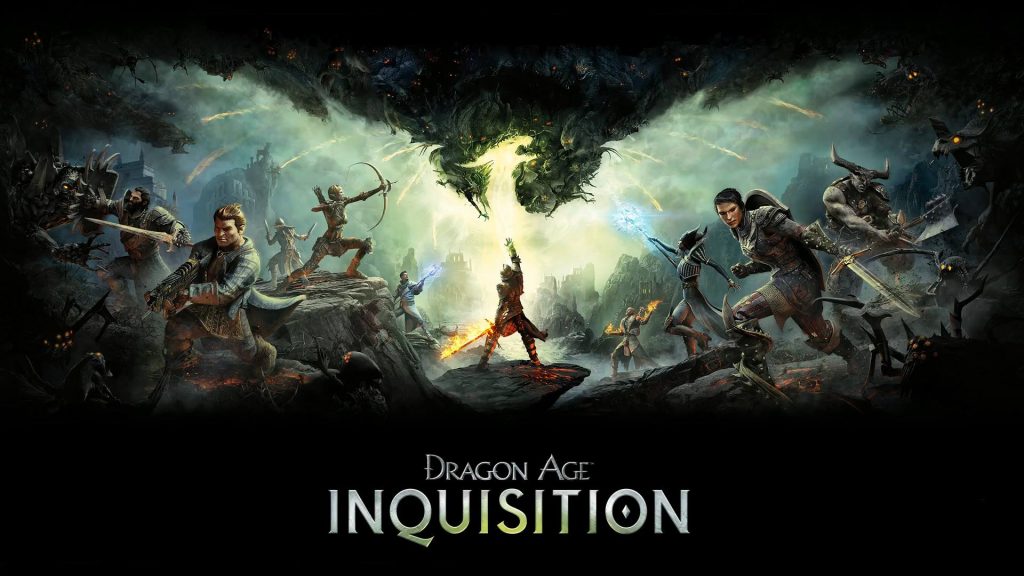


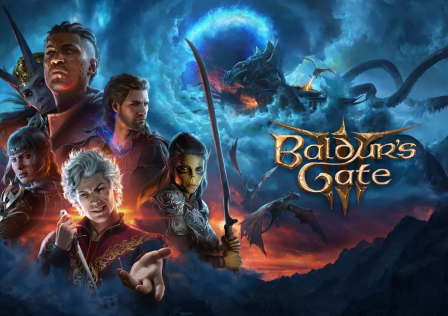

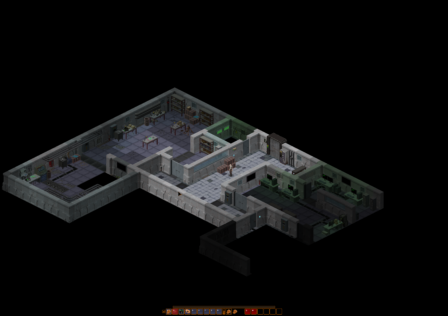
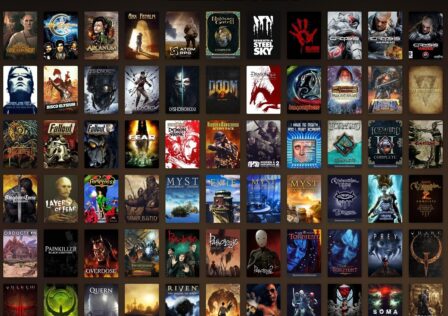


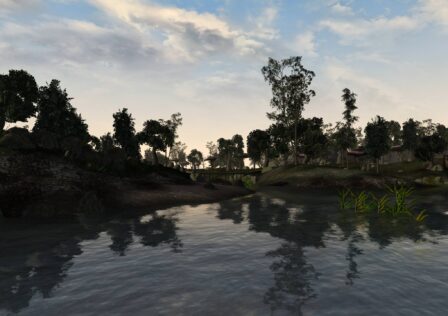


[…] than what isometric-only RPGs allow. This is similar to how the “tactical camera” of Dragon Age: Inquisition functions, but more versatile. You can get a glimpse of Neverwinter Nights 2 combat in the videos […]